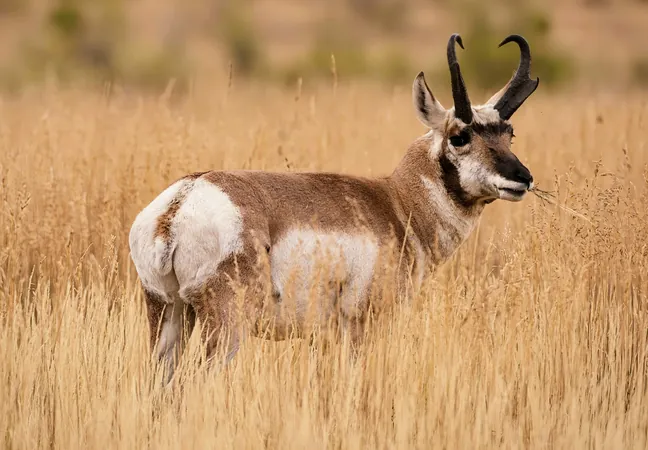
The Devastating Impact of Droughts on U.S. Wildlife: Are We Ready?
2024-12-28
Author: Rajesh
The Drought Crisis Ahead
Projected data reveals a startling future where wildlife will encounter year-long droughts nearly five times as often between 2050 and 2080 compared to previous decades. Moreover, three-year droughts could increase almost sevenfold, making it essential for animal species to recalibrate their survival strategies. “The degree of increased drought exposure for each species in our analysis depends heavily on future greenhouse gas concentrations," stated Dr. Merijn van den Bosch, the study's lead author. Even under optimistic scenarios with lower emissions, many vertebrate species will still encounter heightened drought conditions in the latter half of the century.
Species in Peril
Understanding how these persistent droughts will specifically impact various species is complex. Take the endangered giant kangaroo rat from California, which is accustomed to occasional drought but faces drastic declines during extended dry conditions. This situation exacerbates its vulnerability, threatening its survival. The research highlighted the urgent need to identify regions abundant in biodiversity that are also predicted to face significant drought increases. By employing advanced modeling, scientists observed that the southwestern U.S. houses the highest concentration of drought-threatened species, aligning with the prophecies of increased drought exposure.
What This Means for Ecosystems
Dr. Zack Steel, a senior author of the study, warned about the dire implications of worsening drought conditions on ecosystems. “In areas where species are already stressed by existing dry conditions, the anticipated surge in drought intensity could spell disaster,” he explained. The fragile balance that wildlife has maintained in these areas could soon topple.
A Call to Action
In light of these challenges, immediate action is paramount. Conservationists are advocating for habitat restoration initiatives, particularly in high-biodiversity zones like the southwestern United States. Effective measures may include rehabilitating wetland ecosystems and ensuring the preservation of essential water sources. Proactive strategies can also involve implementing drought-resistant vegetation and creating artificial water sources to support struggling wildlife. Such interventions are critical in a rapidly changing climate, and collaboration among government agencies, local communities, and scientists is vital.
The Path Forward
As we advance, it is imperative we prioritize the resilience of our ecosystem. By focusing on habitat conservation and innovative water management, we can attempt to cushion the harsh blows that persistent droughts threaten to inflict upon U.S. wildlife. The future of countless species depends on our immediate response to this looming crisis. The comprehensive findings of this study have been published in the academic journal *Communications Earth & Environment*. Stay informed and engaged—our wildlife needs our attention now more than ever!
 Brasil (PT)
Brasil (PT)
 Canada (EN)
Canada (EN)
 Chile (ES)
Chile (ES)
 Česko (CS)
Česko (CS)
 대한민국 (KO)
대한민국 (KO)
 España (ES)
España (ES)
 France (FR)
France (FR)
 Hong Kong (EN)
Hong Kong (EN)
 Italia (IT)
Italia (IT)
 日本 (JA)
日本 (JA)
 Magyarország (HU)
Magyarország (HU)
 Norge (NO)
Norge (NO)
 Polska (PL)
Polska (PL)
 Schweiz (DE)
Schweiz (DE)
 Singapore (EN)
Singapore (EN)
 Sverige (SV)
Sverige (SV)
 Suomi (FI)
Suomi (FI)
 Türkiye (TR)
Türkiye (TR)
 الإمارات العربية المتحدة (AR)
الإمارات العربية المتحدة (AR)